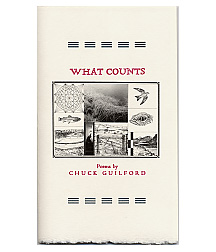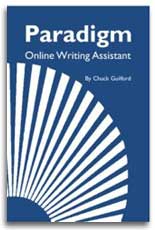Shift in Person
Here again, the goal is to be clear and consistent. This time, however, the aim is to establish a steady, reliable point of view. Doing so helps the reader understand where the two of you stand in relation to the subject, and generally helps build a strong writer/reader relationship.
| Change: | Helga is my best friend. She won't let a person down. You can always count on her to be there when you need help. |
|
to: |
Helga is my best friend. She won't let me down. I can always count on her to be there when I need help. |
... the aim is to establish a steady, reliable point of view.
The writer is probably talking about her own relationship with Helga, not the reader's. Keeping point of view consistent in all three sentences makes that clear.
For our purposes, the main points of view from which to choose correspond to the persons on the Person/Number Chart. Thus, writing based on the first person singular point of view uses "I" and "me" as its foundation, while writing based on the third person plural would use "they" and "them."
First person singular: This point of view is often effective for informal writing, especially for writing about your personal interests and experiences. It draws attention to the writer, which may or may not be a good thing.
I have always enjoyed crocheting for the relaxation it provides me.
First person plural: Slightly more formal than first person singular, this point of view can convey a sense that you and the reader are partners. It takes emphasis away from the writer as an individual and places emphasis on whatever group is designated by "we."
When we look closely at last month's sales figures, we can see what the future holds for our company.
Second person singular or plural: Used carefully, this point of view can make readers feel you are speaking directly to them, are in a sense looking directly at them. Sometimes, however, the second person is blurred into a weak or ineffective substitute for another, more appropriate point of view. Like first person singular, it is generally most effective in personal and informal writing.
strong: You can't imagine how much Helen enjoyed talking with you the other day.
weak: You had to be willing to give a hundred percent whenever you went out on the floor or Coach Bavasi would bench you.
Third person singular and plural: These points of view distance you from your subject and your reader. They make your writing less personal and more formal. They are used for much academic, technical, and scientific writing where tradition or the subject demands an air of distance and objectivity.
A person who violates any of the following laws can expect to receive prompt and immediate punishment. (third person singular)
Students who wish to graduate in June should have their transcripts reviewed by their advisors. (third person plural)
Note: Choosing a dominant point of view doesn't mean you've limited yourself to a single set of pronouns for your whole paper, only that departures from the dominant point of view should be logical and effective.
I hope you told them we would be late.
Activity
4.16 Rewrite the following paragraph twice, each time from a different point of view.
At the entrance of the canyon you could see the vegetation change radically. What struck you most was the sparse, stunted growth of plants otherwise similar to those you had seen a few miles back where the river, calmer and wider, took you through a lush, open area covered with huge trees and some of the longest grasses you had ever seen.




